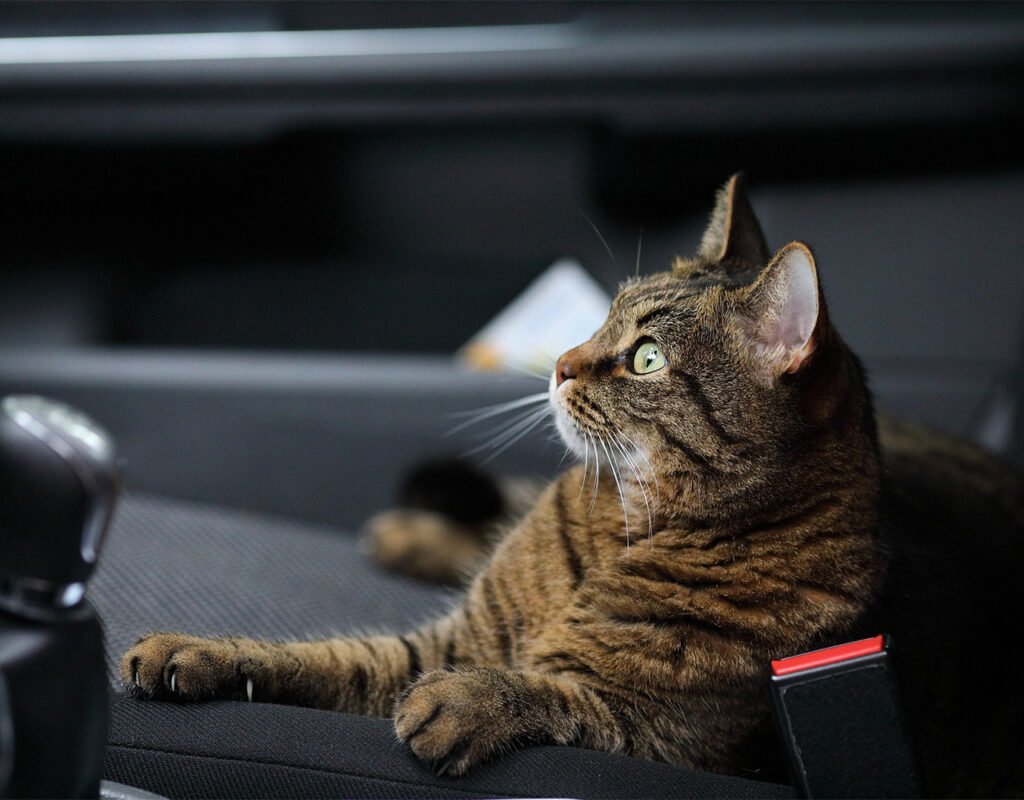It’s no secret that most cats hate car rides. Most cats only take car rides occasionally in their lives. Car rides are often just to the vet, which leaves the cat with a negative impression of the car. Plus, people don’t take their cats on car rides very often, so they may never get used to the feeling.
If short rides are stressful for your cat, long rides are likely to be even worse. If you’re planning a long car ride with your cat, you may feel overwhelmed and anxious, especially if you know your cat gets stressed in the car. While you may never be able to teach your cat to like car rides, you may be able to get them used to them enough to reduce their stress.
How to Get Your Cat Used to the Car
Your cat probably associates car rides with vet visits. Most cats get very stressed at the vet, so this association can make car rides terrible for everyone. Don’t let this stop you from taking your cat to the vet annually or bi-annually. Instead, practice the routine of a car ride until your cat begins to relax. This process can ultimately reduce the stress associated with car rides.
Start by leaving the cat crate outside with the door open so your cat can explore. Place a soft bed or blanket inside, along with a favorite toy and/or some extra treats. Don’t lock your cat in it yet, but let her get used to it first. Offer her extra treats when she’s ready to stay in the crate for a few minutes. If your cat is afraid of the crate, you can spray the inside with a cat pheromone like Feliway to promote a sense of calm. Don’t spray your cat with pheromones directly, though. You can also try putting some catnip in the crate if your cat likes that.

Next, practice locking your cat in the crate as if you’re about to go on a car ride. Pick up the crate and walk around with it. Afterward, let your cat out and give her valuable treats. Increase the amount of time you walk around with your cat in the carrier. Once your cat starts to relax, try taking the carrier to the car, but don’t go anywhere. Reward her with another valuable treat.
Then add small trips to nowhere. Take a lap around the house, then bring your cat back home and let her out of the carrier. Again, offer her plenty of tasty treats.
Gradually increase the length of the car rides without stressing your cat too much. If your cat is screaming or panting loudly, the rides became too long too quickly. Slow down the process and see if your cat adjusts.
Preparing for a long trip
If you are planning a longer trip, perhaps a few hours or more, then it is best to prepare your cat in advance.
Before the actual trip, get a few things. Make sure your cat wears an easy-to-open collar or harness with identification. A microchip is also important in case your cat gets loose or lost and the collar or harness falls off. Make a list of emergency vets along the way in case your cat gets sick.

The night before the trip, take your cat to a small room with the carrier, a litter box, food and water. This will make it easier to put your cat in the carrier the next day. It can also help your cat get used to a smaller room.
If the trip is longer than two or three hours, your cat will need a break. Take a litter box, food and water with you on the trip. Take a break every two or three hours to let your cat relax, eat and drink, and use the litter box.
What to do if your cat won't adjust to the car?
Some cats can never calm down during a car ride despite your best efforts. These cats may benefit from calming supplements and/or medications. Talk to your veterinarian about the best options for your cat.
Supplements like Solliquin can help your cat relax without the need for medication. Test this in advance before embarking on a long trip.
If supplements are ineffective, it may be time to try a stronger medication. For the most anxious cats, sedation may be the best option.
When you arrive at your destination
Whether you’re moving to a new home or taking your cat on vacation, be aware that your cat will need time to adjust to their new surroundings. Gradually introduce your cat to their new space until they’re comfortable. Be patient, as this may take some time.

